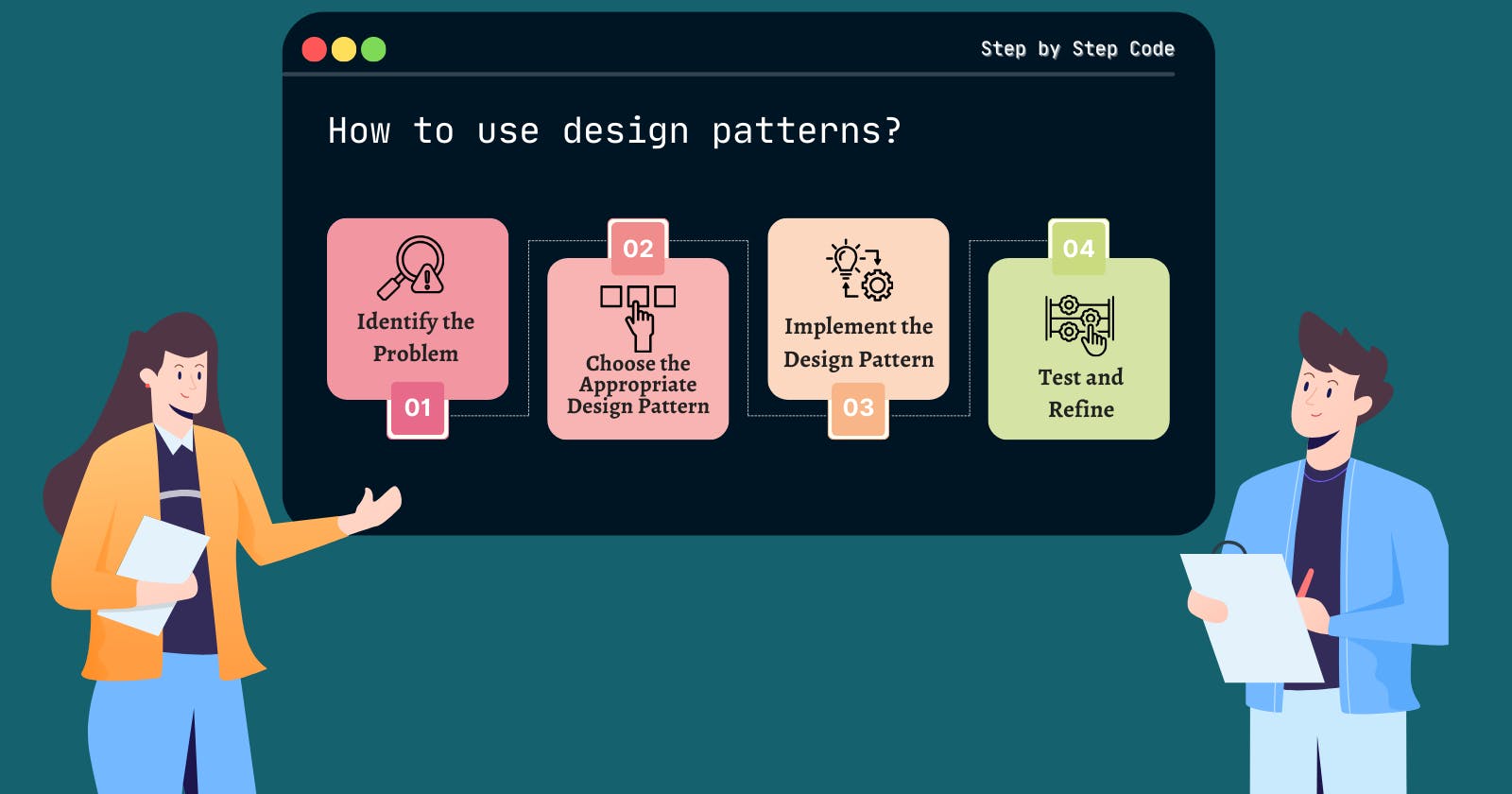Using design patterns involves several steps to effectively implement them in software development. Below are the steps we can fallow to use them.
Identify the Problem:
Understand the specific problem or requirement you need to address in your software design.
Recognize recurring design challenges or issues that can benefit from established solutions.
Example: Suppose you're developing an e-commerce application and need to manage product pricing. You notice that different products have different pricing strategies, such as discounts, promotions, or tiered pricing.
Choose the Appropriate Design Pattern:
Select a design pattern that best fits the problem you've identified. Consider factors like scalability, maintainability, and flexibility.
Different design patterns serve different purposes, such as structural, creational, or behavioral patterns.
Example: For managing product pricing in the e-commerce application, you might choose the Strategy pattern. This pattern allows you to define multiple algorithms for pricing and dynamically switch between them based on the product or context.
Implement the Design Pattern:
Integrate the chosen design pattern into your software architecture.
Follow the guidelines and principles of the design pattern to ensure proper implementation.
Adapt the pattern to fit the specific requirements and constraints of your application.
Example: Implement the Strategy pattern by creating a set of pricing algorithms (e.g., discount pricing, promotional pricing) and encapsulating them into separate classes. Use an interface to define a common contract for all pricing strategies, allowing them to be interchangeable.
// Define interface for pricing strategies
interface PricingStrategy {
calculatePrice(product)
}
// Implement different pricing strategies
class DiscountPricing implements PricingStrategy {
calculatePrice(product) {
// Calculate price with discount logic
}
}
class PromotionalPricing implements PricingStrategy {
calculatePrice(product) {
// Calculate price with promotional logic
}
}
// Context class that utilizes pricing strategies
class Product {
PricingStrategy pricingStrategy
setPricingStrategy(strategy) {
pricingStrategy = strategy
}
getPrice() {
return pricingStrategy.calculatePrice(this)
}
}
// Usage example
main() {
product = new Product()
product.setPricingStrategy(new DiscountPricing())
price = product.getPrice()
display(price)
product.setPricingStrategy(new PromotionalPricing())
price = product.getPrice()
display(price)
}
In this pseudocode:
We define an interface
PricingStrategywith a methodcalculatePrice()to represent different pricing strategies.We implement two concrete pricing strategies:
DiscountPricingandPromotionalPricing, each with its own implementation of thecalculatePrice()method.The
Productclass acts as a context class that utilizes the pricing strategies. It has a methodsetPricingStrategy()to set the pricing strategy dynamically and a methodgetPrice()to calculate the price based on the selected strategy.In the
main()function, we demonstrate how to use different pricing strategies for the same product by setting the pricing strategy usingsetPricingStrategy()and then getting the price withgetPrice().
Test and Refine:
Test the functionality and behavior of your implementation to ensure it meets the intended goals.
Iterate on the design pattern as needed based on feedback and real-world usage.
Refactor or extend the design pattern as your application evolves or new requirements emerge.
Example: Test the pricing functionality with different scenarios, such as applying discounts, changing promotional offers, or introducing new pricing strategies. Refine the implementation based on test results and user feedback, making adjustments to improve performance or accommodate changing requirements.
By following these steps, you can effectively use design patterns to solve common software design problems, promote code reusability, and enhance the maintainability and scalability of your applications.

